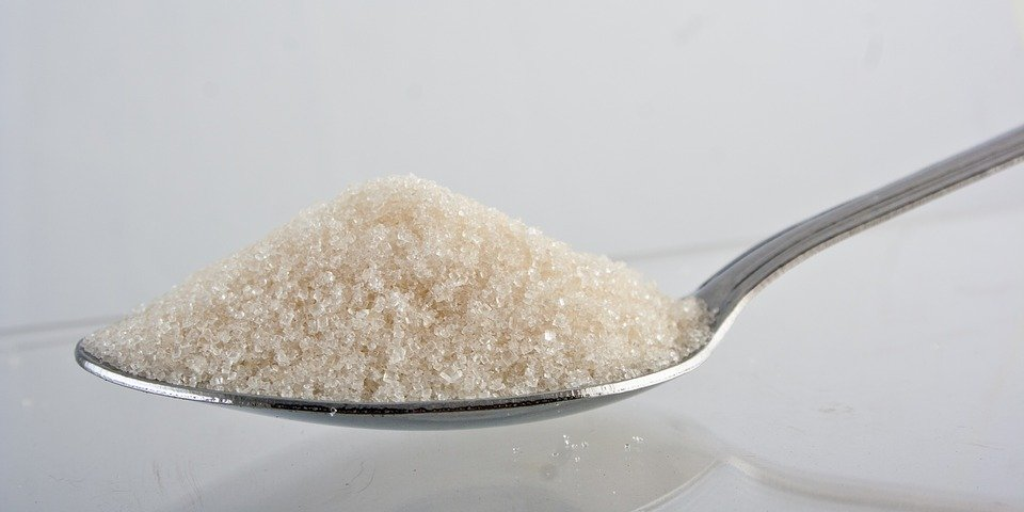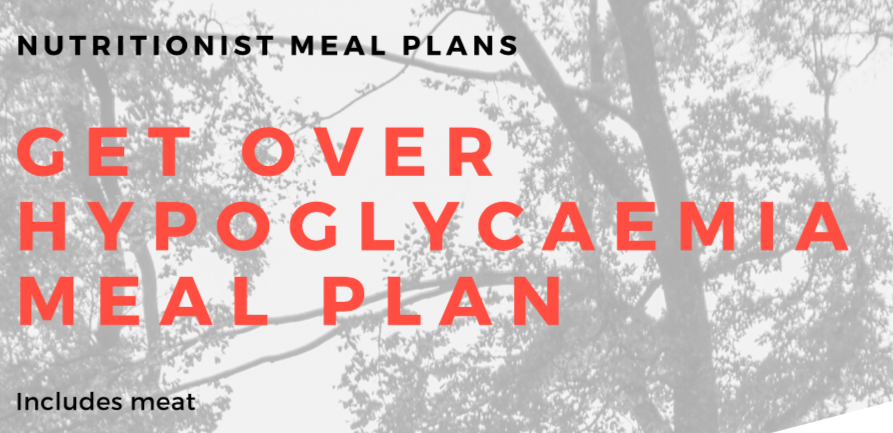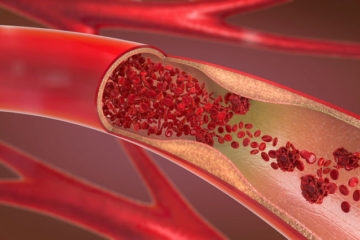Hypoglycaemia is a deficiency of glucose in the bloodstream. It can make you feel jittery and dizzy if you go too long between meals. If you follow your instincts though and eat something sweet, it will only cause worse problems down the track. This post explains why it is vital to overcome hypoglycaemia and how to do it.
Do you have hypoglycaemia?
Here is a list of typical hypoglycaemia symptoms:
- feeling you need to eat every 2 hours
- after a meal you feel either a boost or fatigue
- feeling shaky, dizzy, lightheaded if late for a meal
- feeling hungry or irritable between meals (‘hangry’ – when the previous meal was less than 4 hours ago and you’ve done no substantial physical exercise in between)
- afternoon slump, despite 7-8 hrs sleep the night before and not ill
- caffeine or sweets/chocolate dependency to keep going
Why we need glucose
Our bodies run on glucose. Practically all foods are turned into glucose in our bodies. We can’t just stop eating foods that turn into glucose in our bodies.
Every cell contains many glucose manufacturing plants called ‘mitochondria’. These little factories produce ATP energy which is like little batteries, ready for use as needed. Any extra glucose is stored in the muscles or liver as glycogen. We burn this as we sleep or during exercise over a few minutes long. Our whole energy system depends on glucose in the same way that a car depends on petrol or diesel.

Our bodies get the most glucose from carbohydrates which come from all plant foods or dairy. They also get it from animal proteins (meat, dairy, eggs, fish) but it’s a bit more of a process to get it out. And finally it can come from fat, but this process wastes a lot more energy and is the body’s last resort.
Not only our cells need glucose, but we need a little glucose in our blood constantly. Our red blood cells require glucose to keep working. Since they carry oxygen to all our cells, they can’t work as hard doing this if there is next to no glucose, so we feel tired and irritable.
The trick is to work out how to get enough glucose into our cells to make all the energy we need, but keep a little in our blood to keep the red blood cells working well.
How to age quickly
There is one place in our bodies that glucose is unwelcome, and that is in the blood.
In our warm bodies, as sugars hit proteins in our body (the membranes, skin, ligaments, cells), a chemical reaction occurs that is a bit like caramelising of sugar. The sugar gets sticky, the proteins get damaged (oxidised) and something we call Advanced Glycation End Products (AGEs) form. This is the quickest way to age your whole body.
Your blood vessels, your eye lenses, your brain cells, your skin elastin, the filters in your kidneys – all are damaged by this reaction of sugar and proteins.
And THIS is why your body is designed to get sugar OUT OF your bloodstream and into cells – fast.

Our bodies are designed to get sugar (glucose) out of the bloodstream fast, and into the glucose manufacturing factories in the cells. It is a complex system involving many hormones and signalling pathways. It culminates in the pancreas releasing insulin which washes through the body, stimulating the cells to open their doors to this glut of glucose and let it inside.
This process can take up to 2 hours after a meal to complete, depending on the types of foods you ate.
Here’s how it happens:
- First, you eat, and the process called ”anabolism‘ begins.
- enzymes break food down in the gut
- it goes through the gut lining and enters the bloodstream.
- Glucose levels rise in the blood.
- The correct amount of insulin needed is released and causes blood glucose to go into cells.
- Insulin breaks down and is gone.
- Then your body can switch to a new process called ‘catabolism’ to ‘clean out cells’. Until you eat again.
The danger of hypoglycaemia
- You will put on weight over time. People who eat more often, eat more calories.
- It will be really hard for you to stick to any diet because hypoglycaemia causes hormone imbalances which affects appetite.
- You will struggle to follow any health plan that involves regulating what you eat for the same reasons.
- You will develop an addiction to sugar. Yes, an addiction in the exact same way as a cocaine addiction. Sugar triggers the same brain centres that indicate pleasure and reward that cocaine triggers. This means you become acclimatised to sugar and need more of it to light up the brain centres as time goes on. So you will eat more and sweeter foods, get more AGEs, put on more weight and experience more energy swings day in and day out.
- The more sugar you eat to try and manage the hypoglycaemia symptoms, the closer you come to getting Type 2 diabetes. T2D takes about 10 years to develop, and many of those years are full of hypoglycaemic symptoms.
- Too high blood sugar results in excessive insulin floating around in the blood. Insulin damages the blood and shortens life by many years. We want to be needing as little insulin as possible to get sugar into our cells. This is why doctors are loathe to put diabetic patients on insulin – and encourage them to change their diets and lifestyles instead of using insulin to reduce blood sugar. Insulin is risky.
Diabetes or Hypoglycaemia?
If the cells doors (receptors) are blocked and the sugar in the blood can’t get it inside the cells, you have diabetes. That’s a different thing to hypoglycaemia, but it’s related to it.
If the cell doors are not blocked, then the glucose rushes inside. The more insulin released, the faster the blood glucose rushes into the cells, and the faster the blood glucose drops. This is what causes those jittery symptoms. Your bloodstream is safe, but you suddenly start feeling lightheaded. If only a little insulin is released, the blood sugar drops more slowly – and no symptoms occur. This is what we want to happen!
We need less insulin response in order to get fewer hypoglycaemia symptoms.
To get over hypoglycaemia we need to tamp down the insulin so it is not so aggressive at getting glucose out of the bloodstream. Optimally, it will gently push glucose into the cells over a longer time, leaving just enough in the blood to keep the hungry red blood cells happy also, because they need a little glucose too.
We can use the way we eat to create this neat balance.
Is hypoglycaemia genetic?
Rarely is it genetic. High stress levels, the oral contraceptive pill and smoking can make it more likely, but it is usually caused by lifestyle habits. If a relative has it, it is more likely you follow the same habits as that relative – habits such as favourite recipes, what to eat for snacks, when to eat and how much to eat at meals and snacks.
How to control hypoglyceamia
The reason blood sugar dips so low in a person with hypoglyceamia is that insulin has come in too high a quantity, all at once. So the blood sugar that was really high – all of a sudden drops down to too low. This is what causes hypoglycaemia symptoms.
To control hypoglycaemia we must reduce the amount of insulin needed to get sugar into cells. We do this with what and when we eat.
- we can eat foods that slow down the absorption of sugar through the walls of the gut. The best foods for this are foods that contain fibre. This means wholemeal, brown rice, vegetables, fresh fruit – real whole foods in other words. This means only small amounts of sugar go through at once, needing only small insulin inputs – and no blood sugar swings.
- We can avoid sweet foods that contain no fibre, such as sweet desserts, sugary foods, icecream, cakes, white flour products – because these cause large insulin inputs, and the resulting blood sugar swings – from very high – to very low
- We can limit packaged foods because most contain hidden sugars (which lead to the same problems as in #2)
How to end hypoglyceamia
To end hypoglycaemia, we need to end sugar dependency. Practically, this means you will need to stop eating cakes and muesli bars and processed foods and cereals and drinks with anything more than 5g sugar per serve (on the label). Replace these with real whole foods.

Most people find this easier to do all at once, rather than prolonging the ‘agony’ of it. I used to eat a lot of sugar. <Here> is the story of how I stopped this habit.
Be aware that you will suffer from awful blood sugar swings and mood swings for a few days and probably be a beast to those around you.
But you are not dying – you are actually saving your health.
You are not fasting or eating smaller meals, you are merely eating different foods.
You can still eat between meals at first – but only some whole fruit, a few nuts, or leftover dinner or a cup of tea. After a few weeks, you will be able to go longer between meals and snacks until you need no more snacks between meals. At that time, you no longer have hypoglycaemia. With fewer AGEs forming, your body can then start working to get you feeling and looking younger!

If you would like a meal plan to help you overcome hypoglycaemia, please download the free PDF available below.
Benefits of getting over hypoglycaemia
- reduced chances of developing diabetes
- losing weight without trying
- losing aches and pains and headaches (fewer AGEs)
- looking younger (fewer AGEs in skin)
- feeling more energetic in the day
- being able to go longer between meals without any stress
- having fewer emotional swings



0 Comments